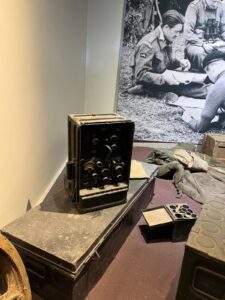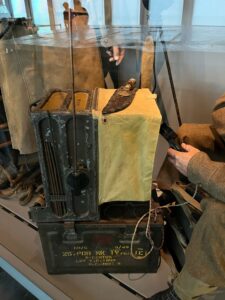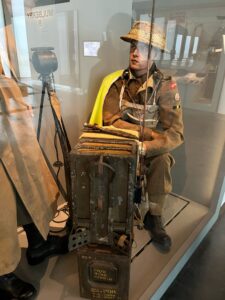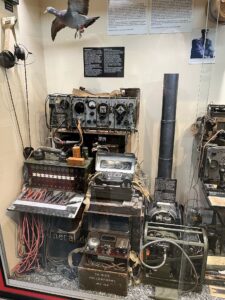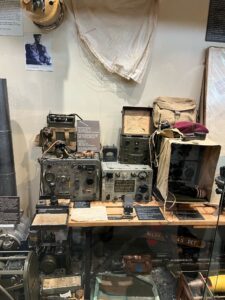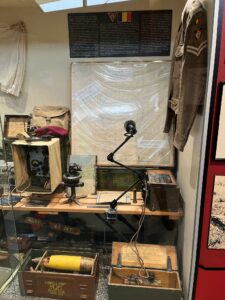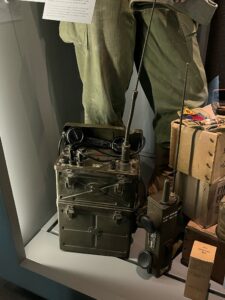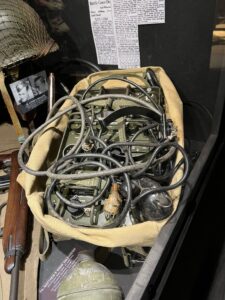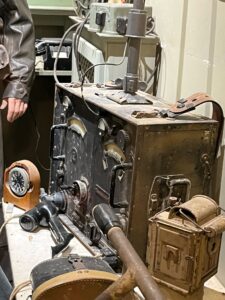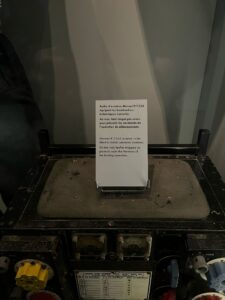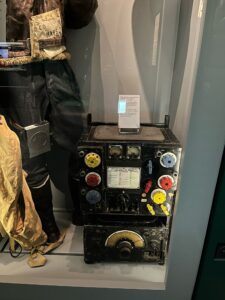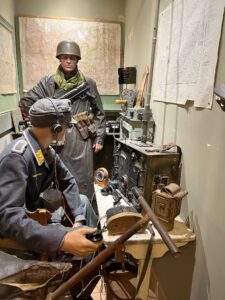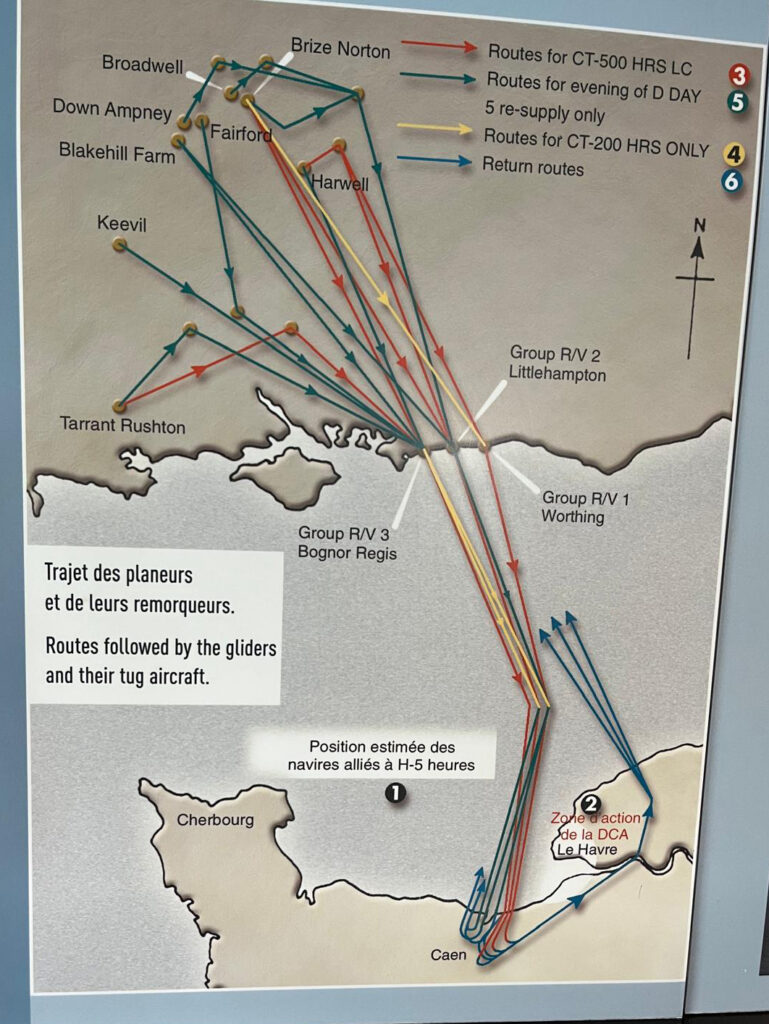On a visit to France, my sister-in-law and brother-in-law visited the D-Day Museum at Arromanche and Pegasus Bridge. Here are a few photos they kindly sent me.
A WS-18 set:
A WS-19 set, Class S wavemeter and more:
Military Radio Equipment:
An R1155 Receiver, T1154 transmitter and radio operators:
Glider Routes:
On 6 June 1944, the bridge, along with the nearby Ranville Bridge over the Orne River, was the target of D Company, 2nd Battalion, Oxfordshire and Buckinghamshire Light Infantry. This glider-borne unit, part of the 6th Airlanding Brigade of the 6th Airborne Division, was assigned the mission as part of Operation Tonga, conducted in the opening minutes of the Allied invasion of Normandy. Under the command of Major John Howard, D Company was tasked with landing in six Airspeed Horsa gliders near the bridges, capturing them intact in a swift coup-de-main operation, and holding them until relieved by the main British invasion forces. The successful seizure of these vital crossings played a critical role in limiting the effectiveness of German counter-attacks following the landings, complementing the simultaneous assault on the nearby Merville Gun Battery.
Raymond Geddes Story:
Raymond Geddes joined the 501st Parachute Infantry Regiment as one of the unit’s original recruits in December of 1942. He served with the regiment, as a radio operator in G Company, until he was wounded on 8th June 1944, at what is today known as “Dead Man’s Corner”.
In the days leading up to D-Day, a paratrooper from the 501st Parachute Infantry Regiment recounted his experience preparing for and participating in the invasion of Normandy. After being moved to Welford Airdrome and confined to a staging area with the 435th Troop Carrier Group, he learned that his battalion would accompany General Maxwell Taylor during the initial assault. On 5th June, after a false start the day before, they boarded planes for France. During the flight, their formation came under intense anti-aircraft fire, and two planes were destroyed; quick thinking by their pilot saved their lives.
The paratrooper landed near Hiesville, right on target in Drop Zone C. After regrouping with members of his company, he participated in the early movements inland, encountering German patrols, heavy firefights, and tragic losses, including a medic friend who was killed by a sniper. His unit played a pivotal role in meeting the 4th Infantry Division coming from Utah Beach, marking a historic link-up.
In the following days, he helped secure German prisoners, narrowly escaped death multiple times, and collected intelligence. During a later attack near “Dead Man’s Corner,” he was wounded twice, once in the leg and once in the eye, and sought treatment from a German medic and an English-speaking German doctor. Eventually evacuated to England, he chose to return to the U.S. after learning he would not be able to rejoin his original unit. Using a ten-dollar bill hidden in his rifle during the jump, he bought a train ticket home to reunite with his family.

